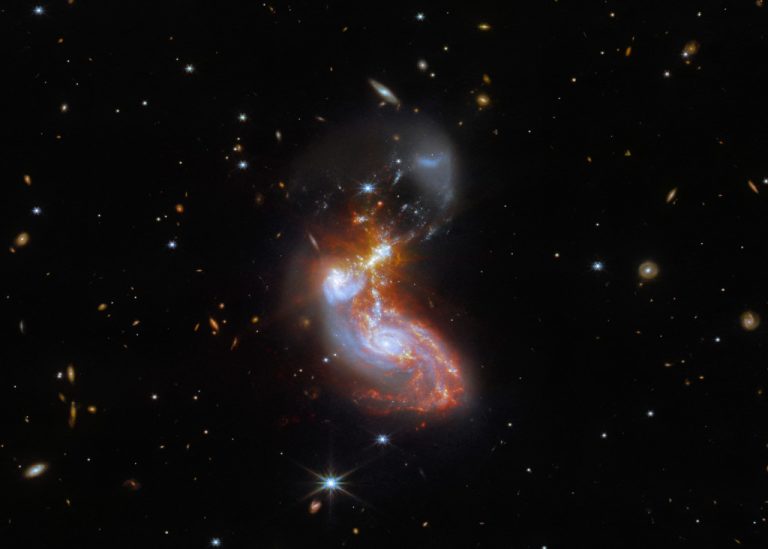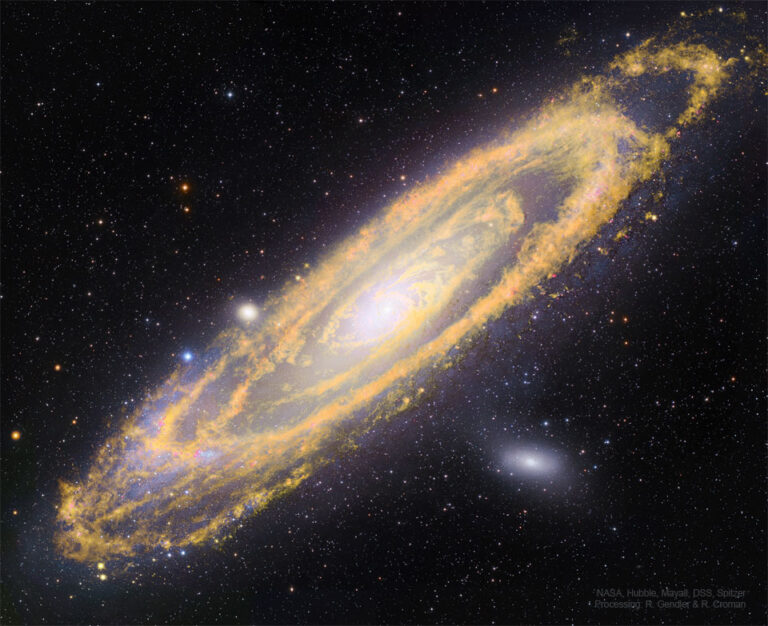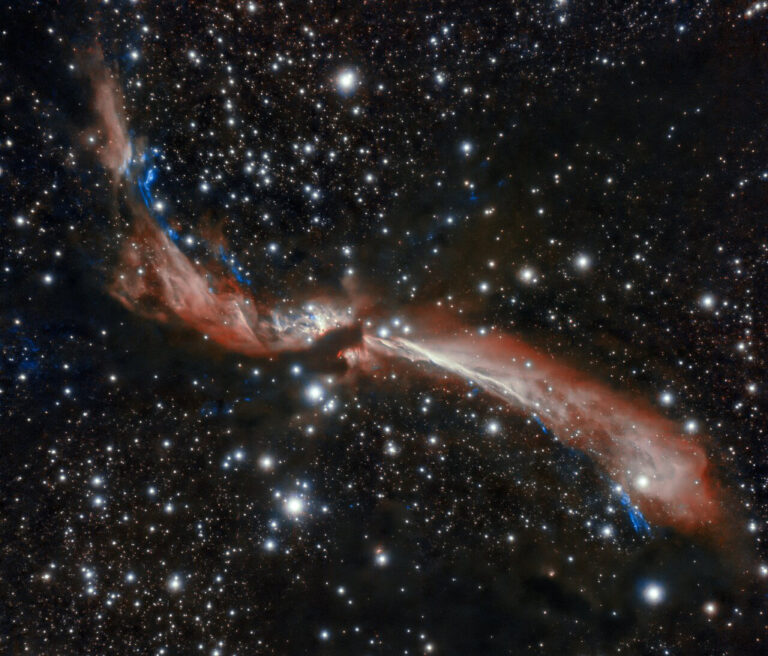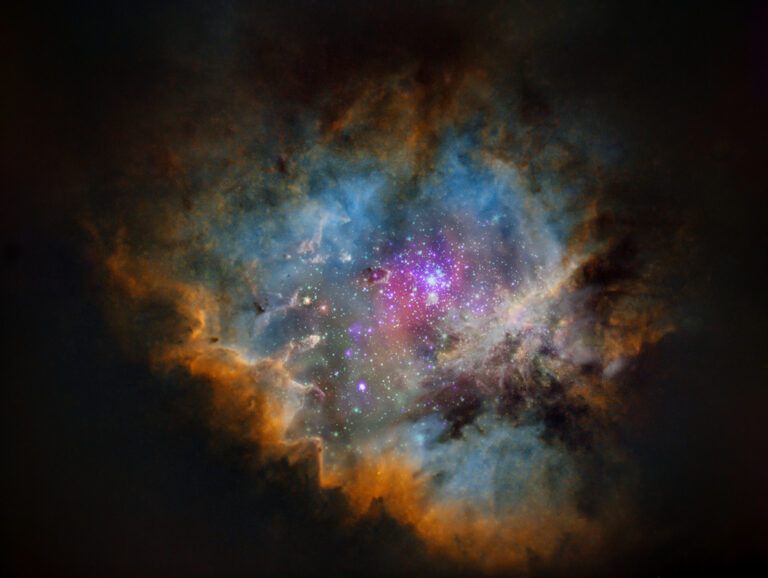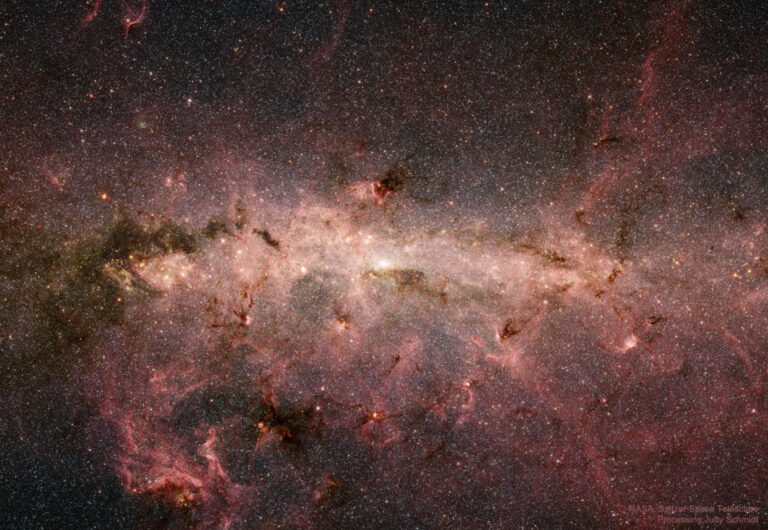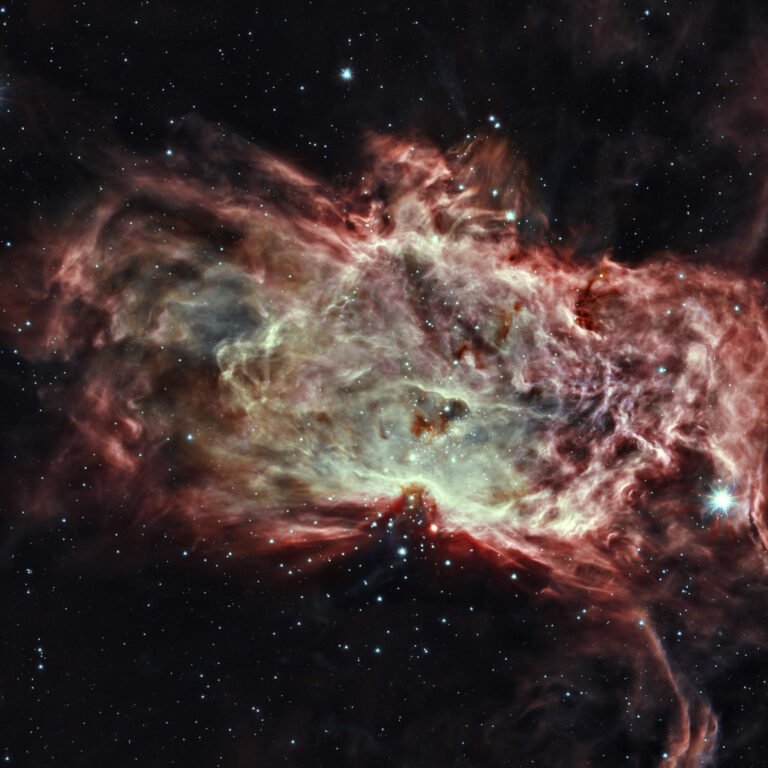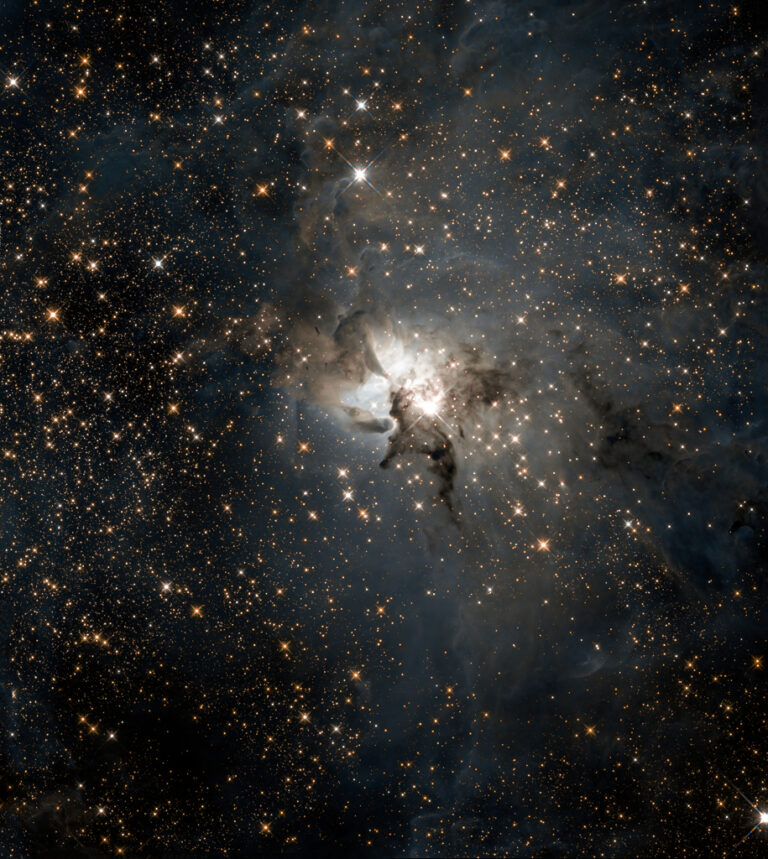IIZw096: 合并中的星系对
2022年12月2日 Merging Galaxy Pair IIZw096 Image Credit: ESA/Webb, NASA & CSA, L. Armus, A. Evans Explanation: Bright at infrared wavelengths, this merging galaxy pair is some 500 million light-years away toward the constellation Delphinus. The cosmic mashup is seen against a background of even more distant galaxies, and occasional spiky foreground stars. But the galaxy merger itself spans about 100,000 light-years in this deep James Webb Space Telescope image. The image data is from Webb’s Near-InfraRed Camera (NIRCam) and Mid-InfraRed Instrument (MIRI). Their combined, sharp infrared view follows galactic scale restructuring in the dusty merger’s wild jumble of intense star forming regions and distorted spiral arms Tomorrow’s picture: Stereo Saturday IIZw096: 合并中的星系对 图像提供: ESA/Webb, NASA & CSA, L. Armus, A. Evans 说明: 这对在海豚座方向约5亿光年远处的合并中星系,是红外光波段很明亮的天体。这个“宇宙混搭”景观,以更遥远的背景星系为衬托,偶而也有带芒的前景恒星来凑热闹。这幅韦伯太空望远镜深空图像所呈现的合并星系对,其跨幅约为100,000光年。组成这幅图像的数据来自韦伯的近红外相机(NIRCam)及中红外成像分光仪(MIRI)。这幅韦伯的整合红外光图像,清晰的呈现这个尘土飞扬的星系级重组事件,及其所造就的狂暴恒星形成区及扭曲螺旋臂。 明日的图片: Stereo…

